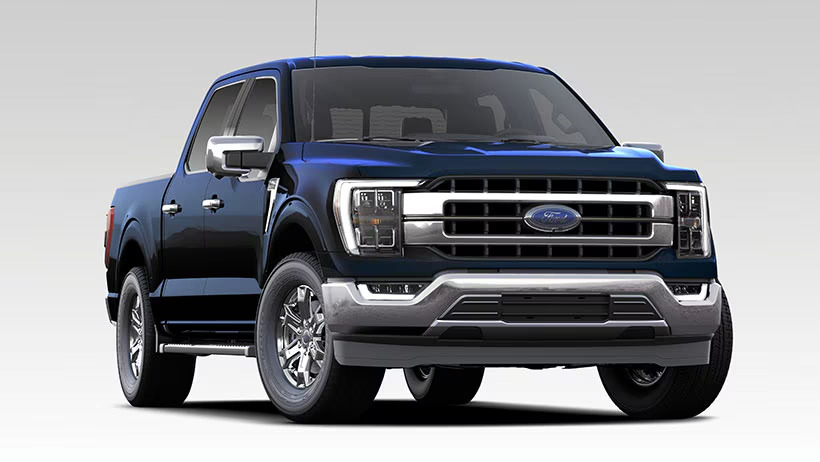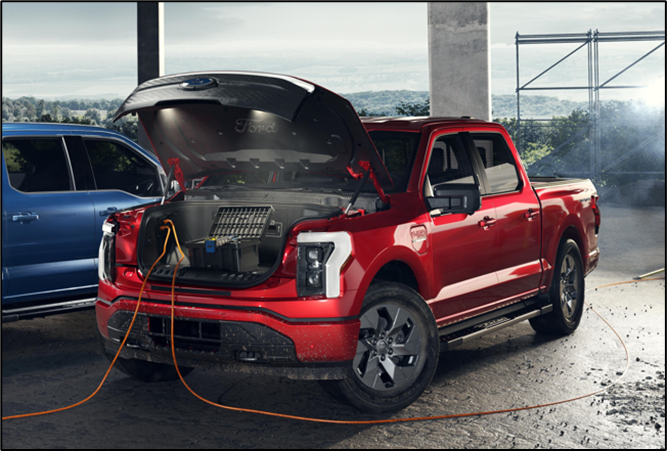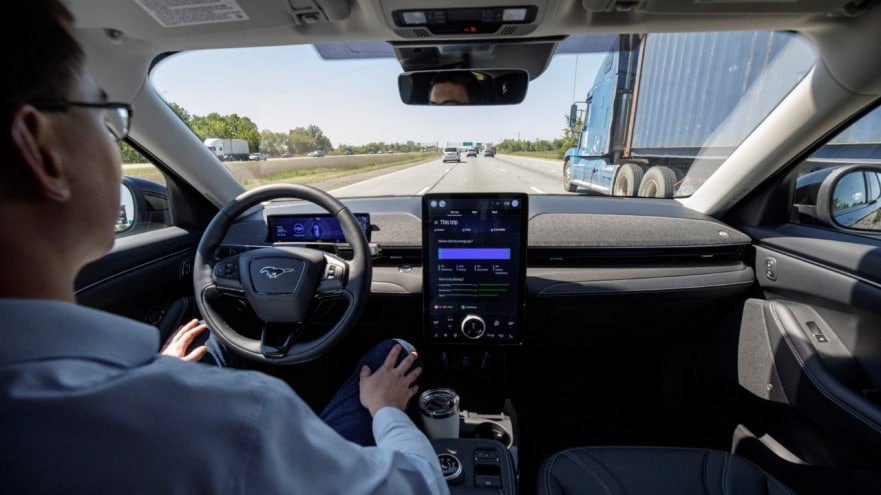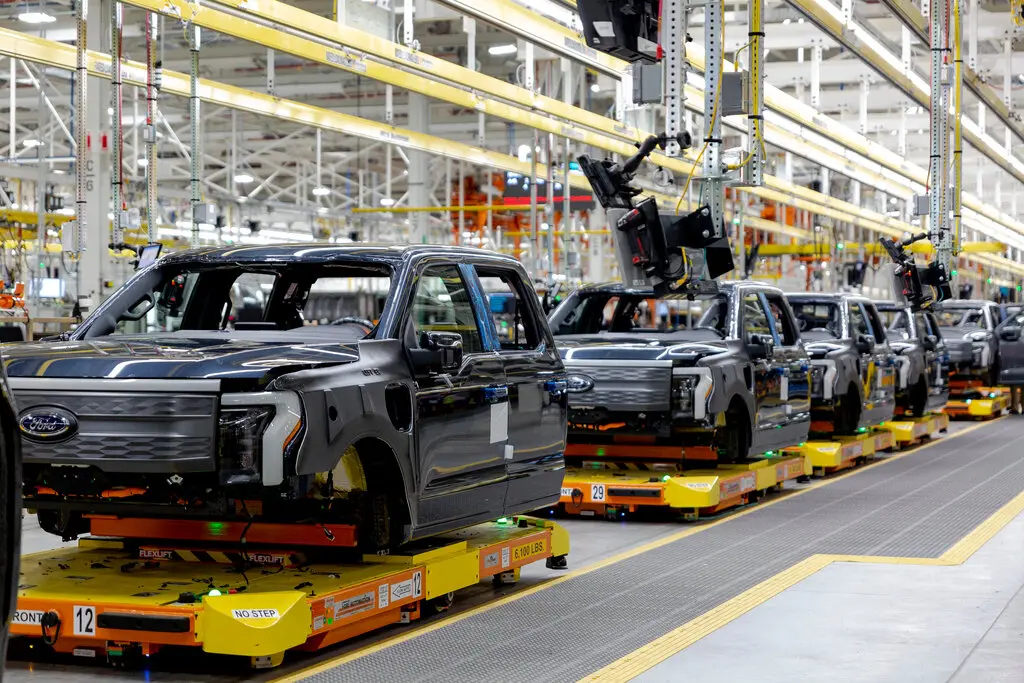In 1999, Ford shook up the truck industry by introducing the world’s first mass-produced pickup with a built-in navigation system. It was a revolutionary leap, placing technology squarely in the driver’s seat – quite literally. This was just one step in Ford’s long history of pioneering truck innovations, a legacy that continues to accelerate today.
Ford truck technology isn’t just about incremental improvements; it’s about redefining what a truck can do. The company is at the forefront of a technological revolution, introducing features that enhance safety, redefine capability, and transform the overall driving experience. From semi-autonomous driving on the highway to powering a job site or weekend getaway, Ford trucks are equipped with groundbreaking technology that’s shaping the future of the industry.
In this deep dive, we’ll explore the cutting-edge Ford truck innovations that are turning heads and setting new standards. We’ll delve into the safety suite of Ford Co-Pilot360, the power capabilities of Pro Power Onboard, the hands-free driving experience of BlueCruise, and other remarkable advancements that solidify Ford’s leadership in truck technology.
Buckle up and get ready to discover how Ford is driving the future of trucks.
Ford Co-Pilot360: Safety Redefined

Ford understands that safety is paramount, especially when it comes to large vehicles like trucks. This is why the company has developed Co-Pilot360, a comprehensive suite of advanced driver-assistance systems (ADAS) designed to make Ford trucks safer for everyone on the road. Think of Co-Pilot360 as your vigilant co-pilot, working tirelessly to monitor your surroundings and provide timely assistance when needed.
Key Features of Ford Co-Pilot360
Co-Pilot360 encompasses an array of cutting-edge features, each contributing to a safer driving experience:
Co-Pilot360’s Impact on Truck Safety
Ford Co-Pilot360 is revolutionizing truck safety in several ways:
Recent Updates and Upgrades
Ford continues to refine and enhance Co-Pilot360 with regular updates. For example, the company has recently introduced:
These updates, along with the core features of Co-Pilot360, underscore Ford’s dedication to making its trucks among the safest on the road. It’s clear that Ford truck technology, as embodied by Co-Pilot360, is leading the charge in truck safety innovation.
Ford Pro Power Onboard: The Powerhouse on Wheels

Imagine having the power of a mobile generator built right into your truck. That’s the reality with Ford Pro Power Onboard, an innovative feature that’s redefining what trucks can do. No longer just a means of transportation, Ford trucks are now equipped to be versatile power sources, capable of powering tools, appliances, and even entire job sites.
Understanding Pro Power Onboard
At its core, Pro Power Onboard is an integrated generator system that harnesses the power of the truck’s engine to produce electricity. This electricity is then made available through multiple outlets located in the truck bed. What sets Pro Power Onboard apart is its seamless integration and ease of use. There’s no need to haul a separate generator, deal with messy fuel, or worry about complicated setups. It’s power, simplified.
Power Output Options and Applications
Ford offers Pro Power Onboard in various power output options to cater to different needs:
Real-World Use Cases
The applications for Pro Power Onboard are as diverse as they are impressive:
Impact on the Truck Industry and Beyond
Pro Power Onboard is not just a feature; it’s a paradigm shift. By transforming trucks into mobile power stations, Ford has opened up a world of possibilities:
Ford BlueCruise: Hands-Free Highway Driving

Imagine cruising down the highway, hands off the wheel, while your truck effortlessly navigates the road. This is the reality Ford BlueCruise brings to drivers, transforming long highway journeys into a more relaxed and potentially safer experience.
Understanding BlueCruise
BlueCruise is Ford’s advanced driver-assistance system (ADAS) that enables hands-free driving on pre-mapped, divided highways. It’s important to note that this is not fully autonomous driving; BlueCruise still requires the driver to be alert and ready to take control if needed. Think of it as a highly capable co-pilot that handles the tedious aspects of highway driving.
How BlueCruise Works
BlueCruise utilizes a sophisticated blend of technologies to function:
By combining data from these sources, Ford BlueCruise can accurately steer the vehicle within its lane, maintain a safe following distance, and adjust speed as needed.
Safety Features and Safeguards
Ford has prioritized safety in the development of BlueCruise. Key safety features include:
BlueCruise vs. Other Hands-Free Driving Systems
BlueCruise is similar in concept to GM’s Super Cruise and Tesla’s Autopilot (with FSD subscription) but differs in several ways:
Potential Implications for the Future of Truck Driving
Ford BlueCruise has the potential to transform the trucking industry in significant ways:
It’s important to note that Ford BlueCruise is not a replacement for the driver. It’s a tool that can enhance safety and convenience on the road, but the driver remains ultimately responsible for the safe operation of the vehicle. The evolution of Ford truck technology, as exemplified by BlueCruise, is pushing the boundaries of what’s possible and paving the way for a future where trucks play an even greater role in transportation and logistics.
Other Notable Ford Truck Innovations
While Co-Pilot360, Pro Power Onboard, and BlueCruise grab the headlines, Ford’s commitment to innovation extends far beyond these flagship features. The company is continually pushing boundaries to enhance every aspect of the truck ownership experience. Let’s delve into some of the other remarkable Ford truck innovations that are shaping the future of the industry.
Hybrid and Electric Powertrains
Ford is leading the charge towards a more sustainable future with its hybrid and electric truck offerings. The F-150 PowerBoost Hybrid combines a powerful gasoline engine with an electric motor, delivering impressive fuel efficiency and torque. This innovative powertrain provides the best of both worlds: the capability of a traditional truck with the eco-consciousness of an electric vehicle.
But Ford isn’t stopping there. The all-electric F-150 Lightning represents a monumental leap in truck technology. With zero emissions and lightning-fast acceleration, it’s a testament to Ford’s dedication to electrifying its lineup. The Lightning isn’t just about environmental responsibility; it’s also about redefining performance and capability in the electric age.
Advanced Towing and Hauling Features
Ford trucks are renowned for their towing and hauling prowess, and Ford continues to raise the bar with advanced features designed to make these tasks easier and safer. The Pro Trailer Backup Assist system simplifies the often-tricky task of reversing a trailer by allowing the driver to control the trailer’s direction with a simple knob. The available onboard scales provide real-time weight information, ensuring that the truck is properly loaded for optimal performance and safety.
Additionally, the Smart Hitch feature guides the driver through the hitch process, ensuring a secure connection. These innovations, combined with Ford’s powerful engine options and robust chassis designs, make Ford trucks the go-to choice for those who demand the utmost in towing and hauling capabilities.
Connectivity and Infotainment Systems (SYNC 4)
Modern trucks are more than just workhorses; they are also mobile offices and entertainment centers. Ford’s SYNC 4 infotainment system is at the heart of this transformation. With its large touchscreen, intuitive interface, and cloud connectivity, SYNC 4 offers a seamless experience for navigation, communication, and entertainment. It supports Apple CarPlay and Android Auto, allowing drivers to access their favorite apps and services on the go.
SYNC 4 also includes the FordPass Connect™ feature, which enables remote vehicle access and control through a smartphone app. This means drivers can lock and unlock their truck, start the engine remotely, and even check vehicle status from anywhere. The over-the-air updates ensure that the system is always up-to-date with the latest features and improvements.
Interior Design and Comfort Enhancements
Ford understands that the interior of a truck is more than just a place to sit. It’s a workspace, a sanctuary, and a home away from home for many drivers. That’s why Ford is continually refining its interior designs to prioritize comfort, convenience, and functionality.
Premium materials, ergonomic seating, and ample storage options create a welcoming and comfortable environment. Features like the available Max Recline Seats, which fold nearly flat for resting, and the Interior Work Surface, which transforms the center console into a flat work surface, cater to the needs of both work and leisure.
Ford’s dedication to these less-heralded innovations demonstrates a holistic approach to truck development. By focusing on not just the powertrain but also the finer details of the driving experience, Ford is ensuring that its trucks remain at the forefront of the industry for years to come. These Ford truck innovations are a testament to the company’s commitment to constantly pushing boundaries and redefining what a truck can be.
The Future of Ford Truck Technology: Driving Innovation Forward

Current technological Ford truck innovations are impressive, but the company is far from finished. With an unwavering commitment to innovation, Ford is actively shaping the future of truck technology, envisioning a world where trucks are not just vehicles, but intelligent, sustainable, and highly personalized partners in work and life.
Fully Autonomous Driving
While Ford BlueCruise offers a glimpse of hands-free driving, the future holds the promise of fully autonomous trucks. Imagine a convoy of trucks navigating highways and city streets without human intervention, optimizing routes for efficiency and safety. Ford is already investing heavily in autonomous vehicle research and development, and while the timeline for widespread adoption is still uncertain, it’s clear that autonomous trucks have the potential to revolutionize the transportation industry.
The benefits are numerous: reduced driver fatigue, improved safety, optimized logistics, and potentially lower transportation costs. Ford’s commitment to safety and rigorous testing will ensure that any autonomous technology it deploys is both reliable and trustworthy.
Increased Integration of AI and Machine Learning
Artificial intelligence (AI) and machine learning are poised to play a pivotal role in the future of Ford trucks. These technologies can analyze vast amounts of data from sensors and cameras to enhance various aspects of the truck’s performance. AI can optimize engine performance, predict maintenance needs, and even personalize the driving experience based on the driver’s preferences and habits.
Machine learning algorithms can continuously learn and adapt, making the truck smarter and more efficient over time. Imagine a truck that can anticipate your needs, suggest optimal routes, and even warn you of potential hazards before they become apparent. The possibilities are endless, and Ford is at the forefront of exploring these AI-powered advancements.
More Sustainable Powertrain Options
As environmental concerns become increasingly pressing, Ford is doubling down on sustainable powertrain options. The F-150 Lightning is just the beginning. Expect to see more hybrid and all-electric models in the Ford truck lineup, catering to a broader range of needs and budgets.
Ford is also investing in research on hydrogen fuel cell technology, which offers the potential for long-range, zero-emission trucking. Additionally, the company is exploring the use of sustainable materials in its trucks, reducing the environmental impact of production. Ford’s commitment to sustainability is not just about compliance; it’s about creating a brighter future for generations to come.
Enhanced Connectivity and Personalization
The future of Ford trucks is not just about the hardware; it’s also about creating a seamless and personalized digital experience. SYNC 4 is a stepping stone, but future iterations are likely to offer even more advanced features, such as:
These features will not only make trucks more convenient to use but also more enjoyable to own. Ford’s vision is to create a truck that seamlessly integrates into your digital life, making it an extension of your smartphone and other connected devices.
Conclusion
Ford’s unwavering commitment to innovation is evident in its groundbreaking truck technology. From the safety enhancements of Co-Pilot360 to the power capabilities of Pro Power Onboard, the hands-free driving experience of BlueCruise, and a host of other advancements, Ford trucks are redefining what’s possible. The company’s focus on sustainability, AI integration, and personalized connectivity further solidifies its position as a leader in the industry.
Ford truck technology isn’t just about the here and now; it’s about shaping the future of transportation. It’s about empowering drivers, enhancing safety, and driving progress. If you’re ready to experience the future of trucks firsthand, we invite you to visit your local Ford dealership and explore these groundbreaking technologies.
What are your thoughts on the future of Ford truck technology? Share your insights and opinions in the comments below!